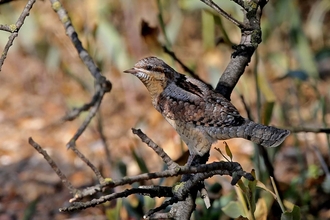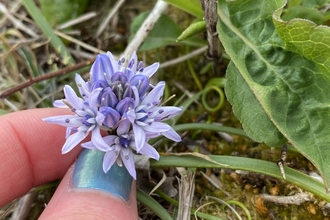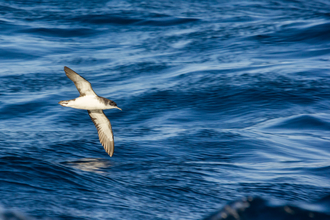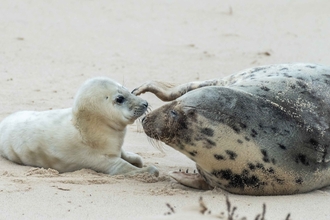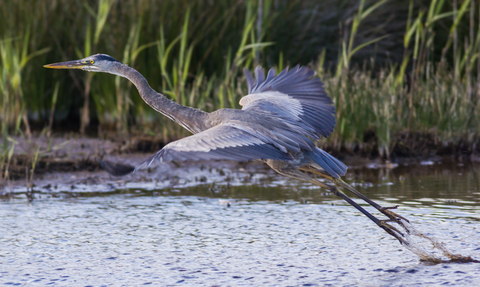
How to go birdwatching on Scilly
Enjoy birdwatching on the Isles of Scilly
Scilly’s geographical position on the wild Atlantic edge has made it mecca for birdwatchers since the 1960s. This island chain is perfectly located to capture American species swept across the Atlantic by powerful fast-moving depressions and a favourable jet stream, Siberian species that come over the top of the UK and even cold northerlies can bring geese, ducks, finches and buntings. It is a heady mix of species vagrancy.
Like many Scilly tourists, birders return year on year for decades on end, in the hope of watching rare migrant birds, with perhaps 500 visiting birders annually. Scilly still holds a robust reputation for being one of the best birdwatching sites in the British Isles. The Isles of Scilly Bird Group (ISBG), founded in 2001, represents the hobby on the islands and supports targeted conservation work, as well as organising the October Bird Log called at 9pm in the Scillonian Club. They publish the nationally renowned annual Bird and Natural History Review, which provides an in-depth look at birds and other wildlife found around the islands. ISBG maintains the Scilly 'Bird List' which stands at around 450 species now.
Only around 50 bird species breed on Scilly, but those that do benefit from traditional farming methods, a lack of disturbance, few predators and obliging tearooms. Birds that are declining elsewhere in the UK, like song thrushes and house sparrows, seemingly thrive on the Isles of Scilly. Garden birds like blackbirds, wrens, robins and dunnocks belt out their song from late winter, creating a long and beautiful dawn chorus that can be heard from February until June. An early morning wander in the sunshine to one of the quieter spots on the islands can deliver an orchestra of warblers, thrushes, chats, tits and finches.
A walk around wild headlands will turn up attractive spring migrants including northern wheatears, ring ouzels and whinchats; good spots to search are Peninnis or Giant’s Castle on St Mary’s, Castle Down on Tresco, Shipman Head on Bryher, Wingletang on St Agnes or up to the Daymark on St Martin’s.
The spring can also strike big for a rarity or two. In 2021, a rock thrush was found near the airport on St Mary’s and both 2023 and 2020 greeted lesser kestrels (normally found from the Mediterranean across to central Asia), to St Mary's. 2018 saw a one-day visit from a belted kingfisher. 2021 was a lively year for spotting ostentatious hoopoes from mainland Europe, whilst a dazzling bee-eater spent a couple of weeks touring around St Mary’s. We regularly see rare birds, brought by warm southerlies, like night herons, little bitterns, subalpine warblers, red-rumped swallows, black kites and red-footed falcons. In June 2021, Scilly saw the first sighting in 150 years of an Egyptian vulture, being described as a ‘once-in-a-century bird’.
As the summer kicks in, attention switches from the land to the sea. Any boat trip out is rarely a wasted opportunity to enjoy marine bird species. Thirteen species of seabird breed on and around the archipelago, totalling about 20,000 birds. Find out more about watching our seabirds here.
Autumn sees the big influx of birders from across the UK, keen to find and see some of the rarities that end up on Scilly during peak migration. In 2022, Scilly hit birding headlines when a Blackburnian warbler was found on Bryher, staying for sixteen days. This was the first sighting of this American warbler in England. Other recent rarities include a black-and-white warbler, two Swainson’s thrushes and an indigo bunting, all from America, as well as red-eyed vireos, white-rumped sandpiper, yellow-billed cuckoos, buff-bellied pipits, grey-cheeked thrush, and even a quiet day can turn up both common and scare migrants, like wrynecks, redstarts, yellow-browed warblers or little buntings.
There are hotspots to search for specific species. There are six birdwatching hides on Scilly: two on Tresco Great Pool, two at Lower Moors and two at Porth Hellick on St Mary’s. The Parsonage on St Agnes is a reliable autumn site for red-breasted flycatchers, as well as warblers like yellow-browed or Pallas’. Weedy fields often hide a scarce or rare bunting or pipit. Wooded areas on the Garrison can turn up similar species, as well as Little Arthur Farm on St Martin’s. Inland water bodies are good for migrant wildfowl and wading birds; Porth Hellick Pool and Lower Moors on St Mary’s, the Great Pool and Abbey Pool on Tresco.
Even as the year progresses into winter, Scilly can strike lucky, with hermit thrush, royal tern and killdeer turning up in the last four years. Winter thrushes arrive en masse, and divers and sea duck seek sheltered shallow bays to feed.
Isles of Scilly Bird Group
The ISBG website publishes regular sightings of birds, cetaceans and other species of note around the islands, as well as offering useful information including bird checklists, maps, birdwatching guidelines, useful links and photographs. You can support their work by becoming a member for just £15 a year in the UK, for which you’ll receive a copy of the annual Bird and Natural History Review. You can also purchase a copy from several outlets around Hugh Town or find contact details for their voluntary committee. You can share your sightings with the local bird recorder, thus contributing to local citizen science.
Find out more
Find out more about Scilly's bird life below, what's been spotted and when to visit...

